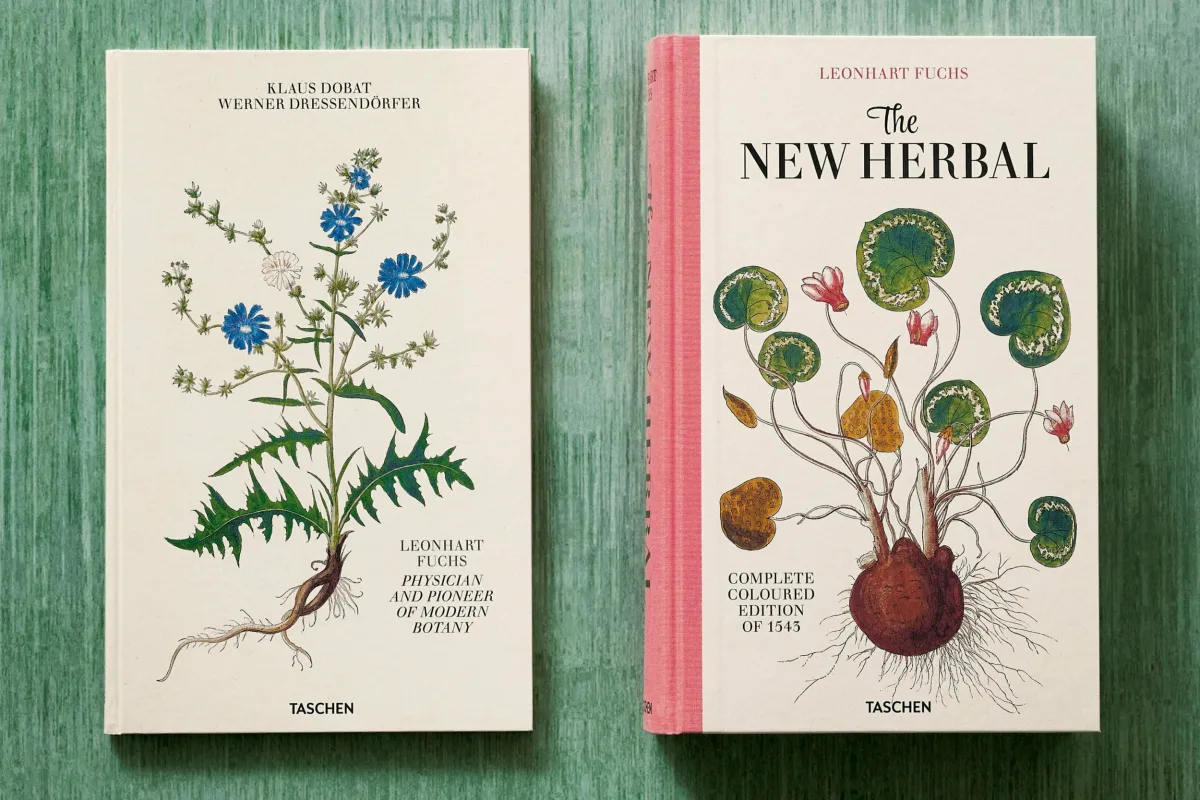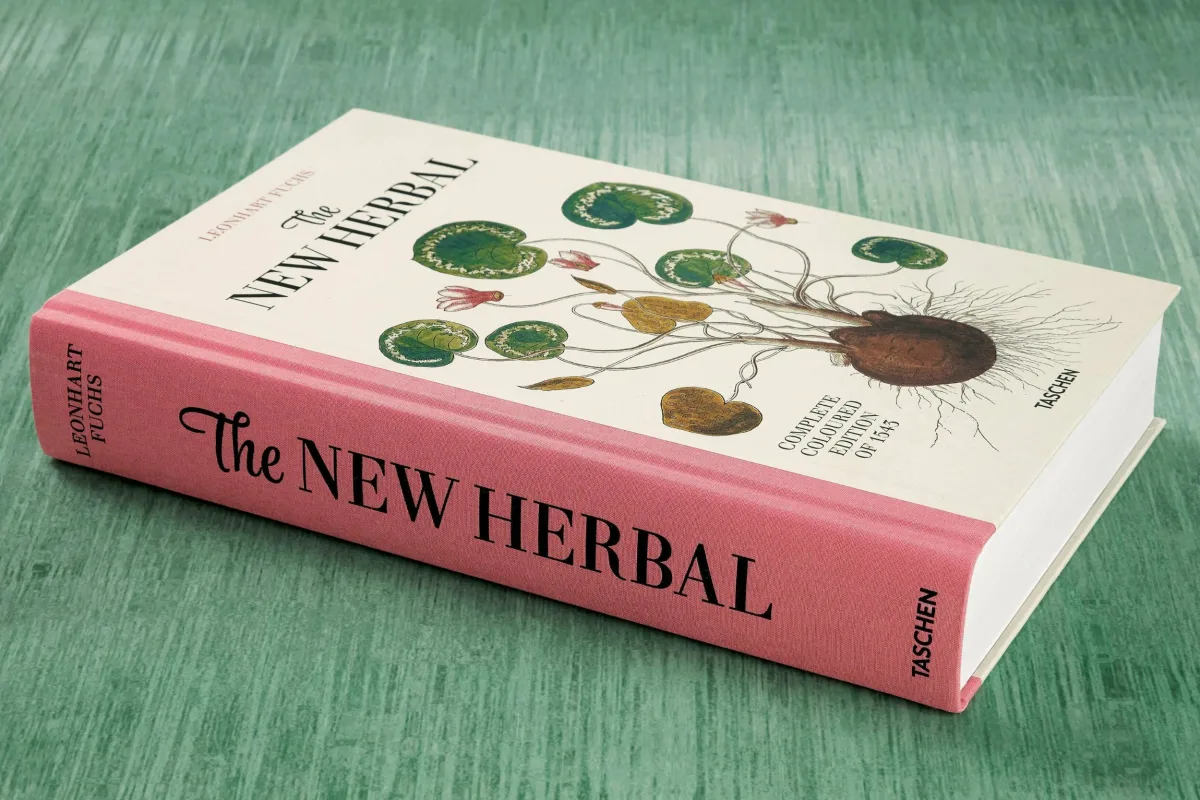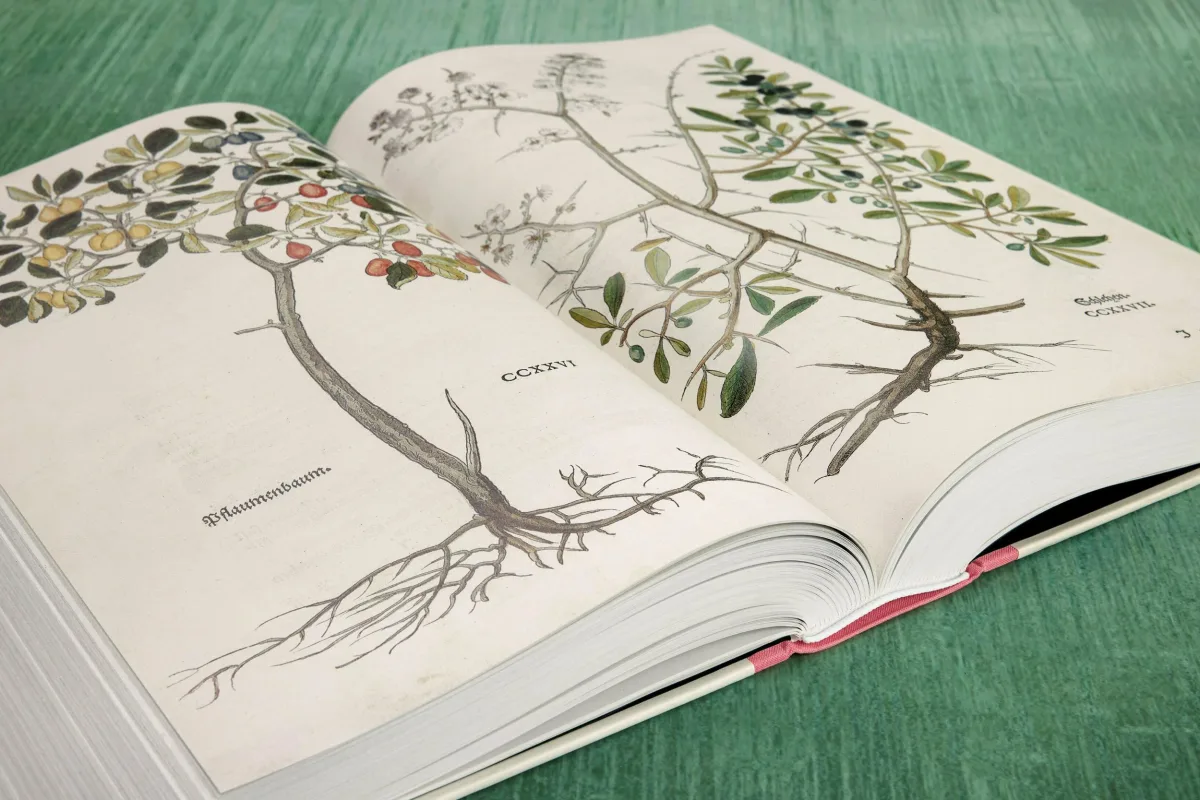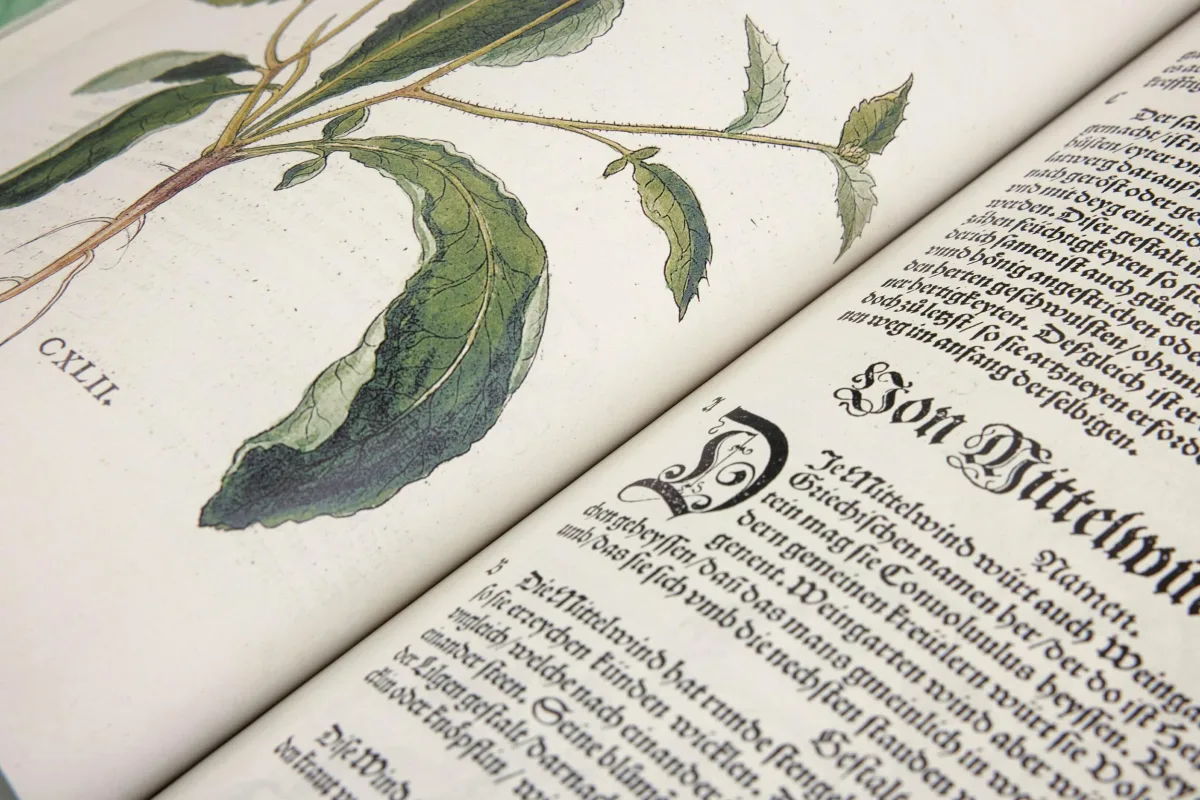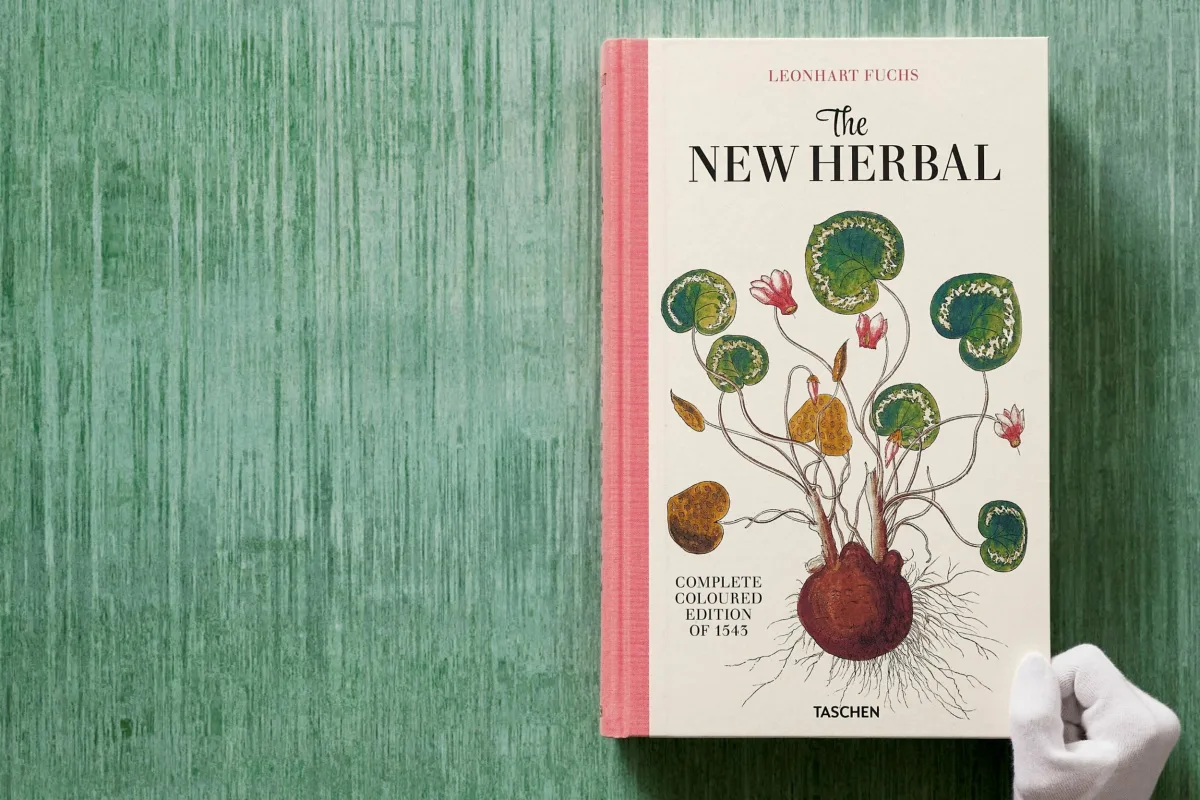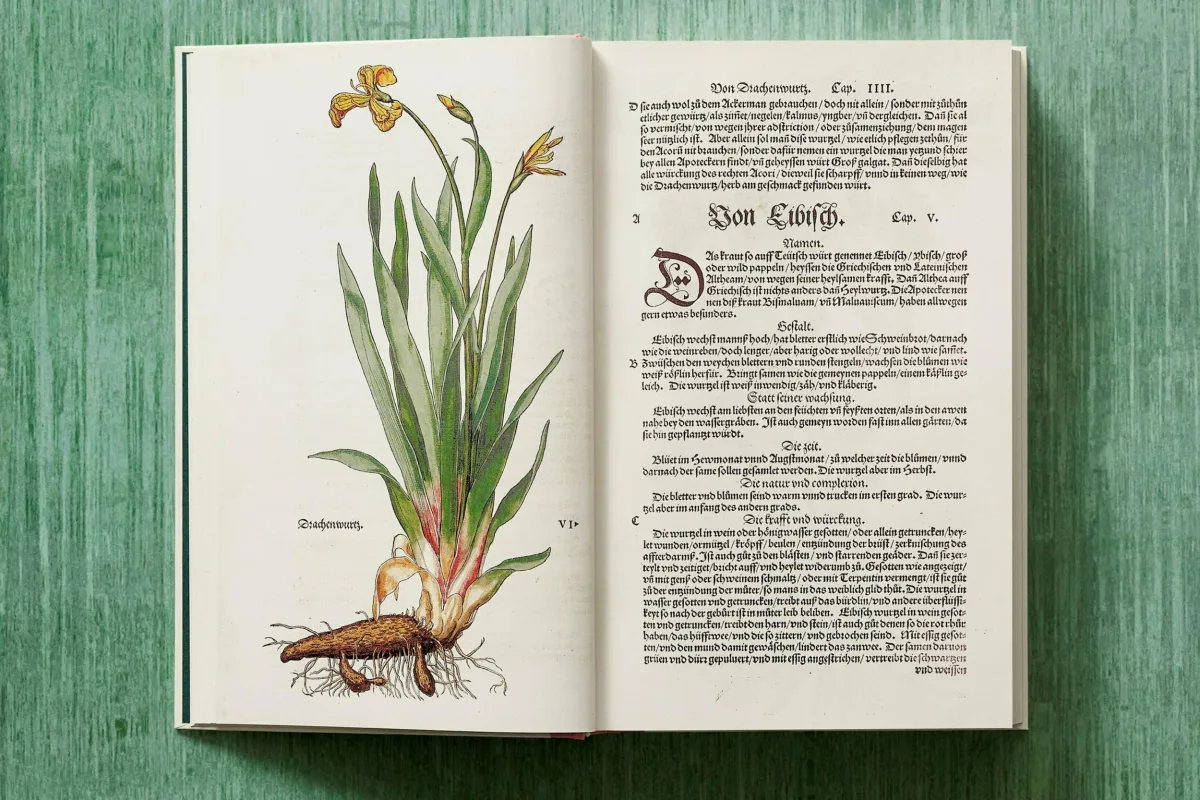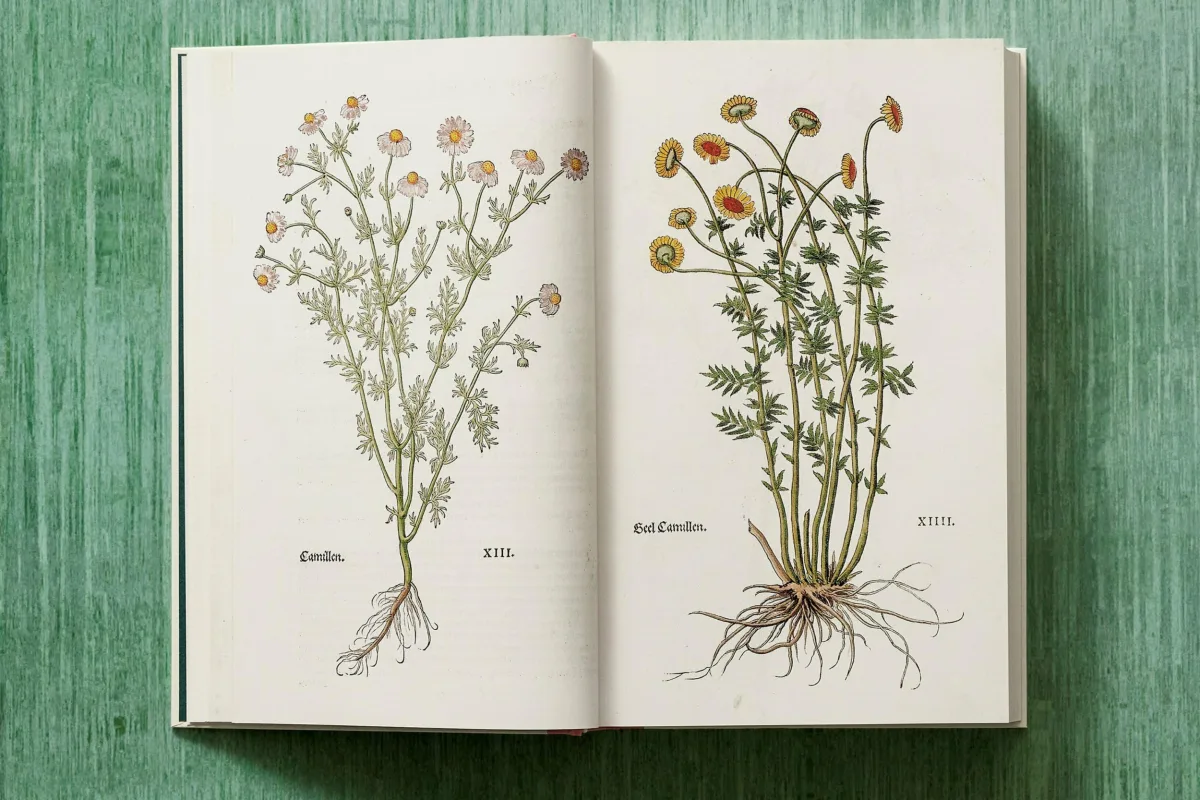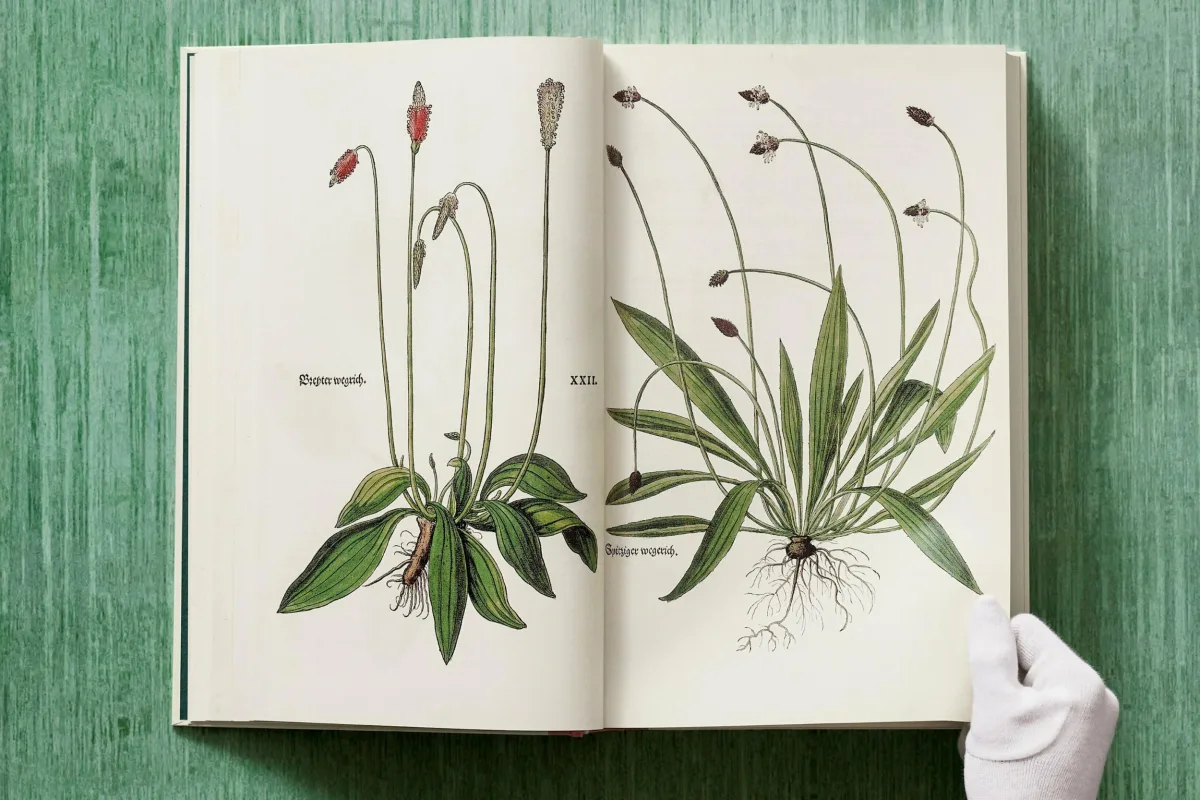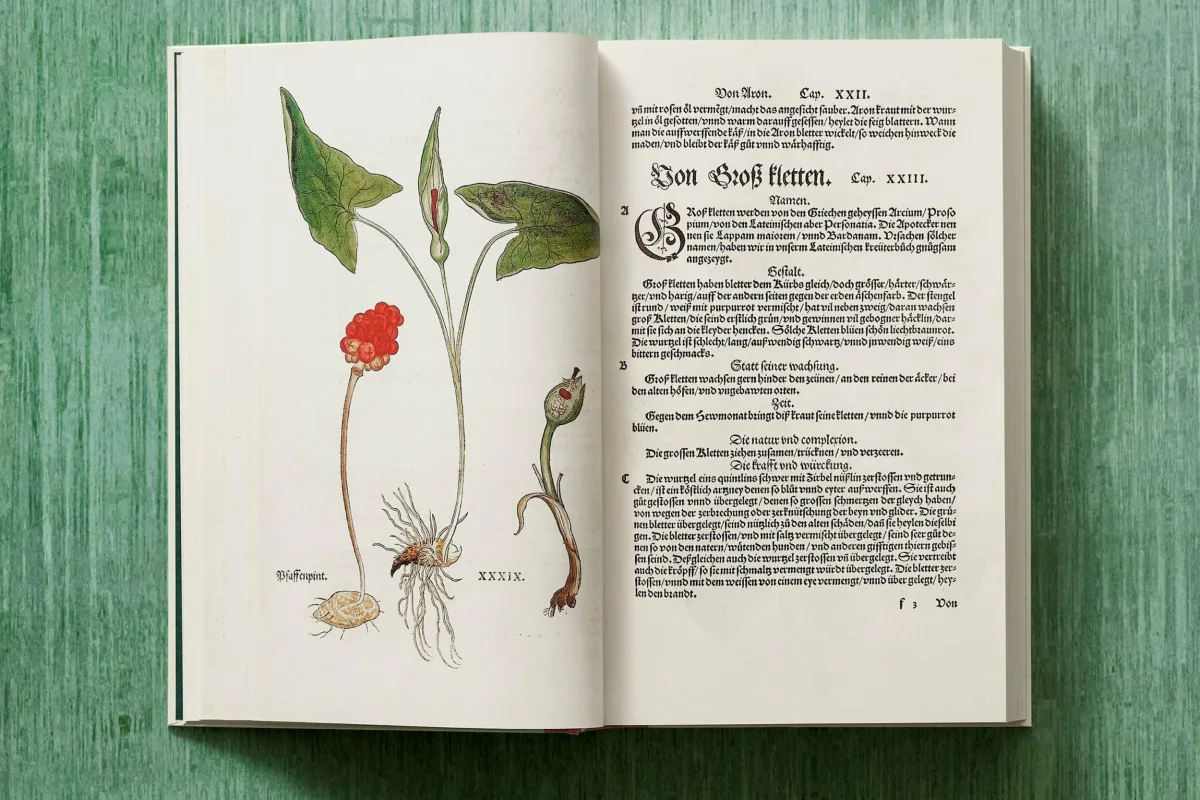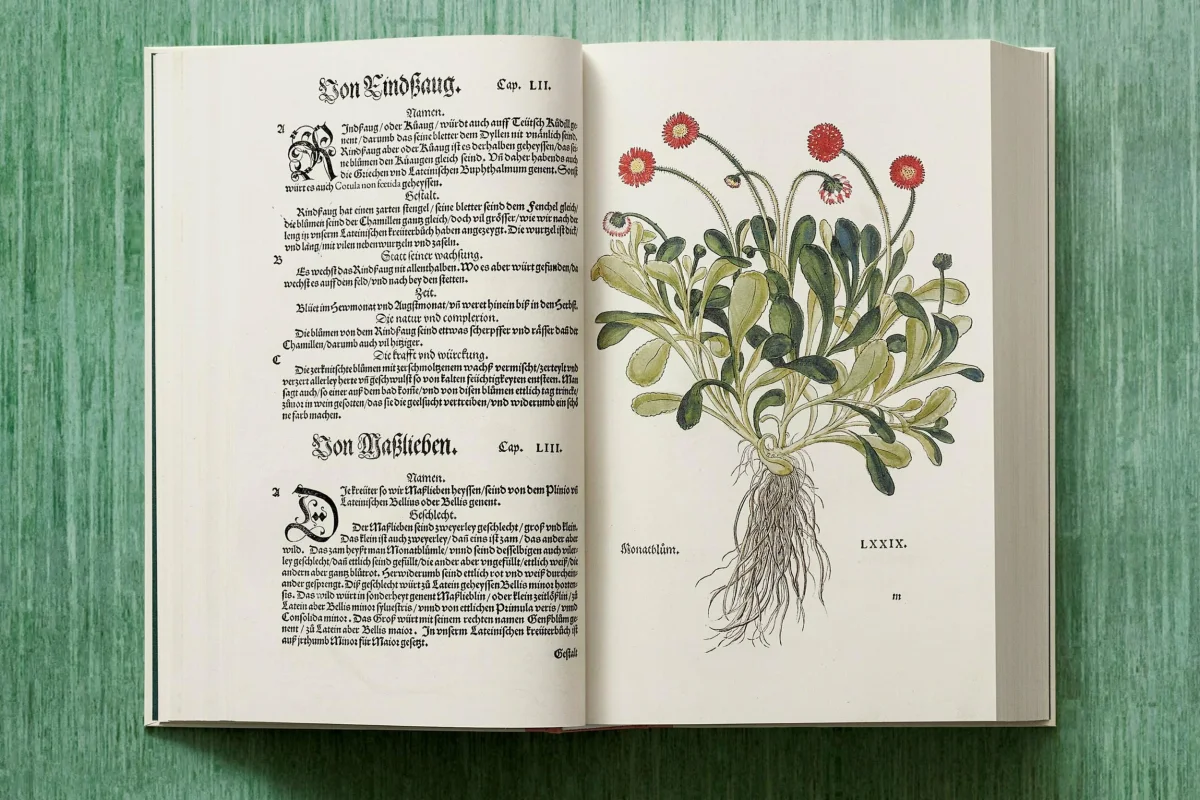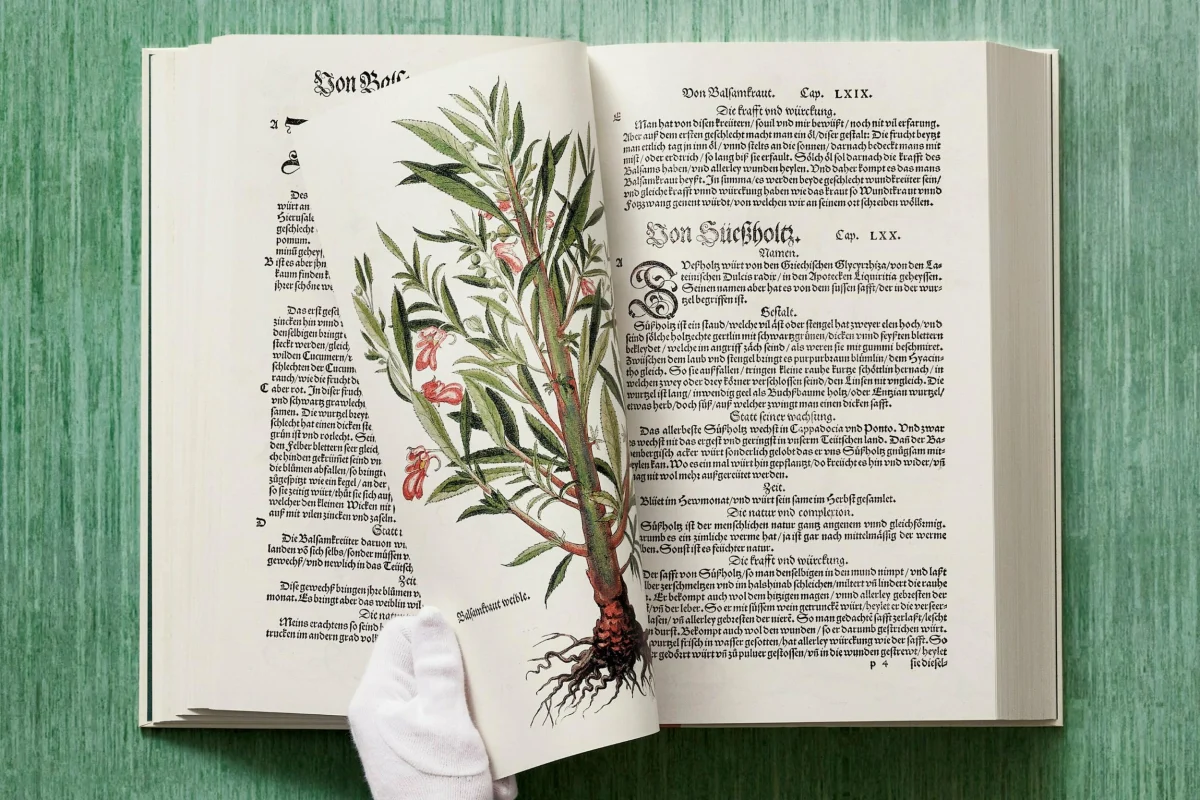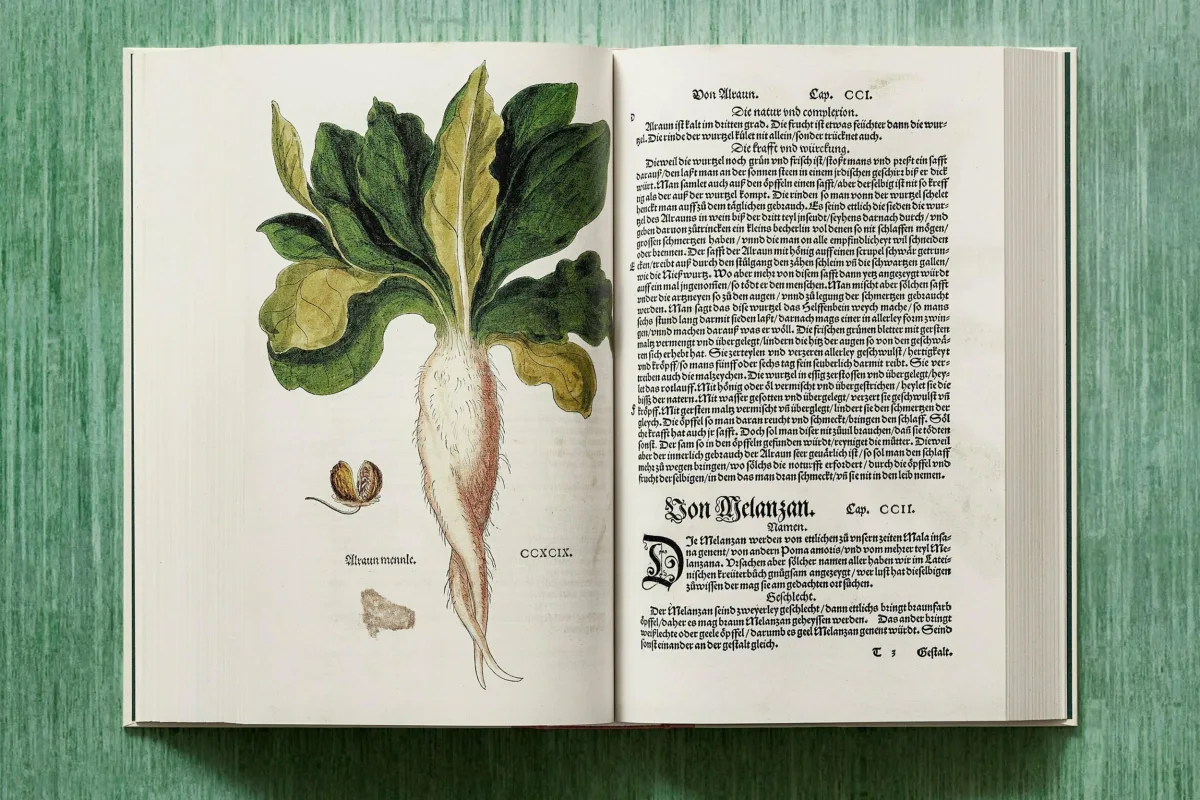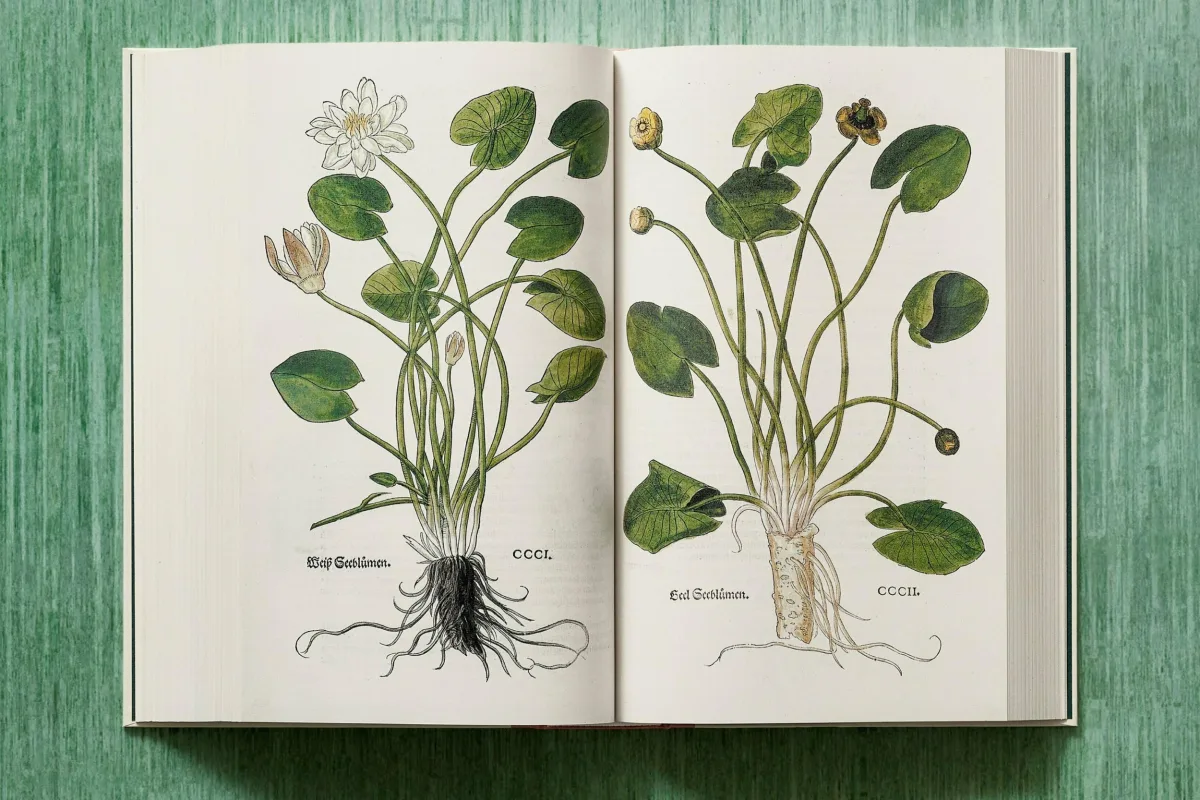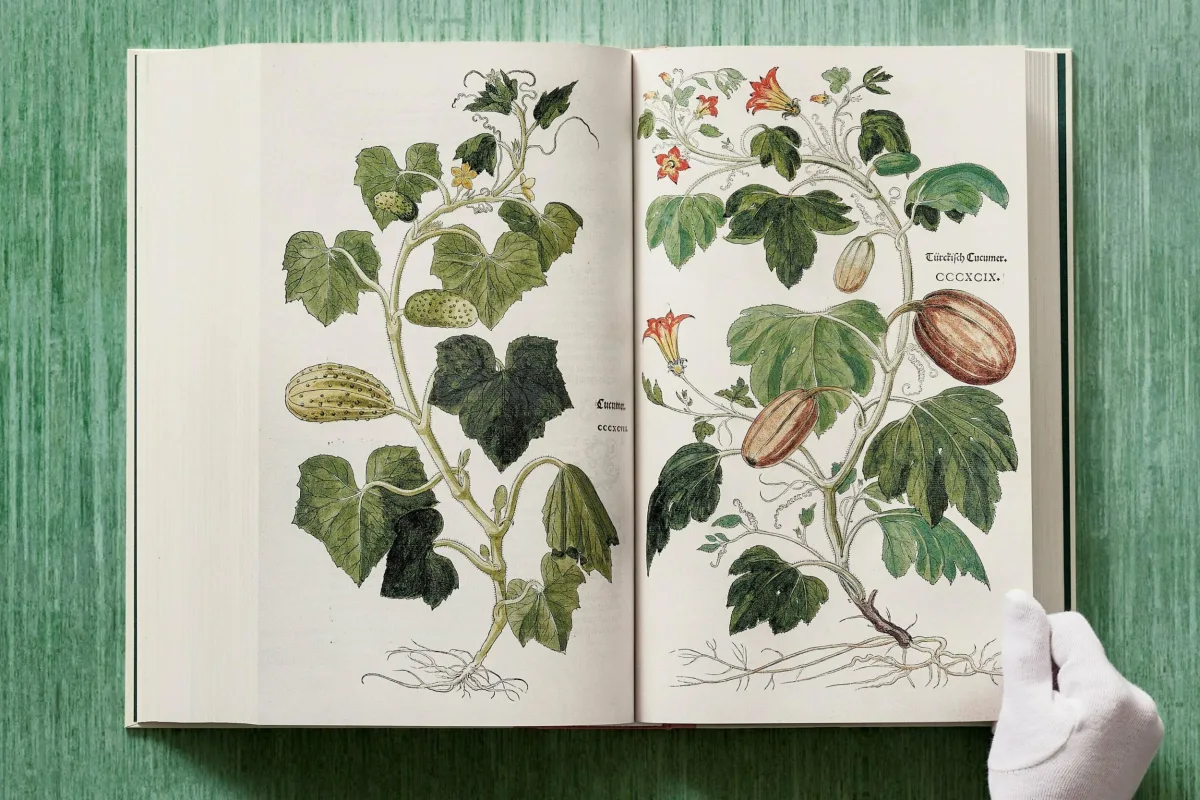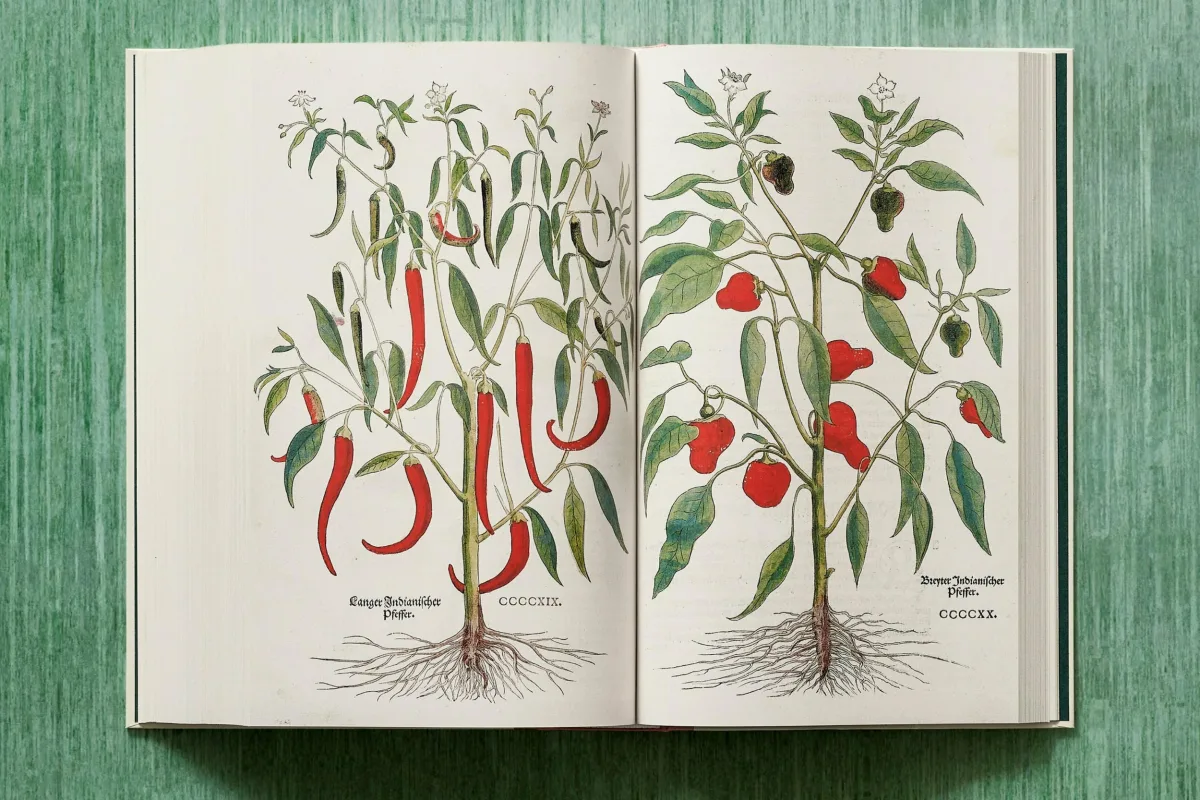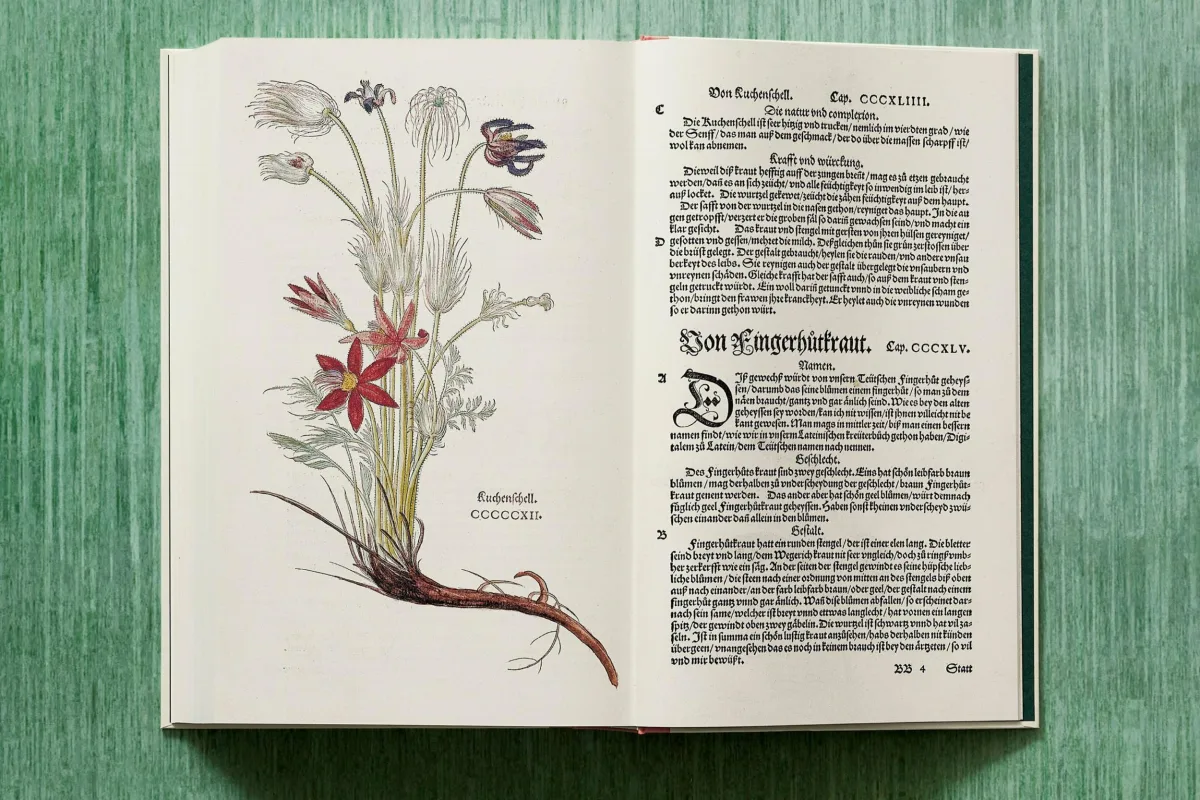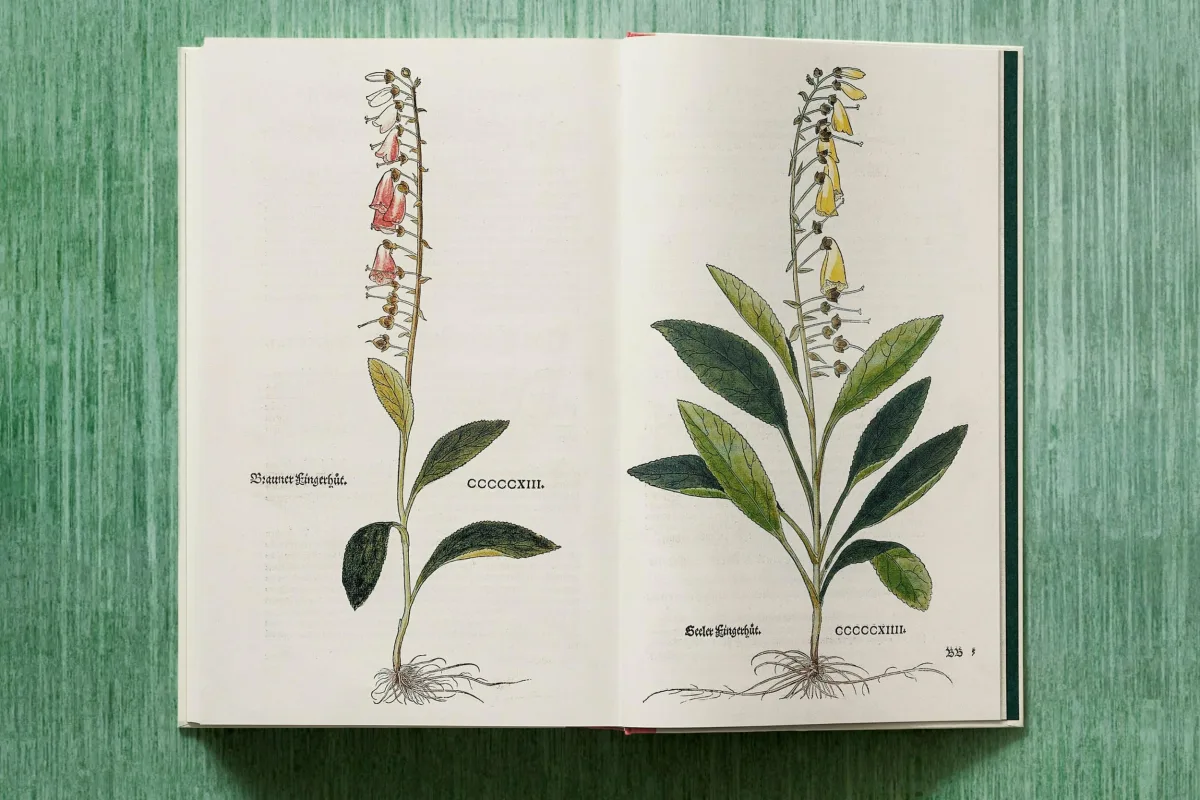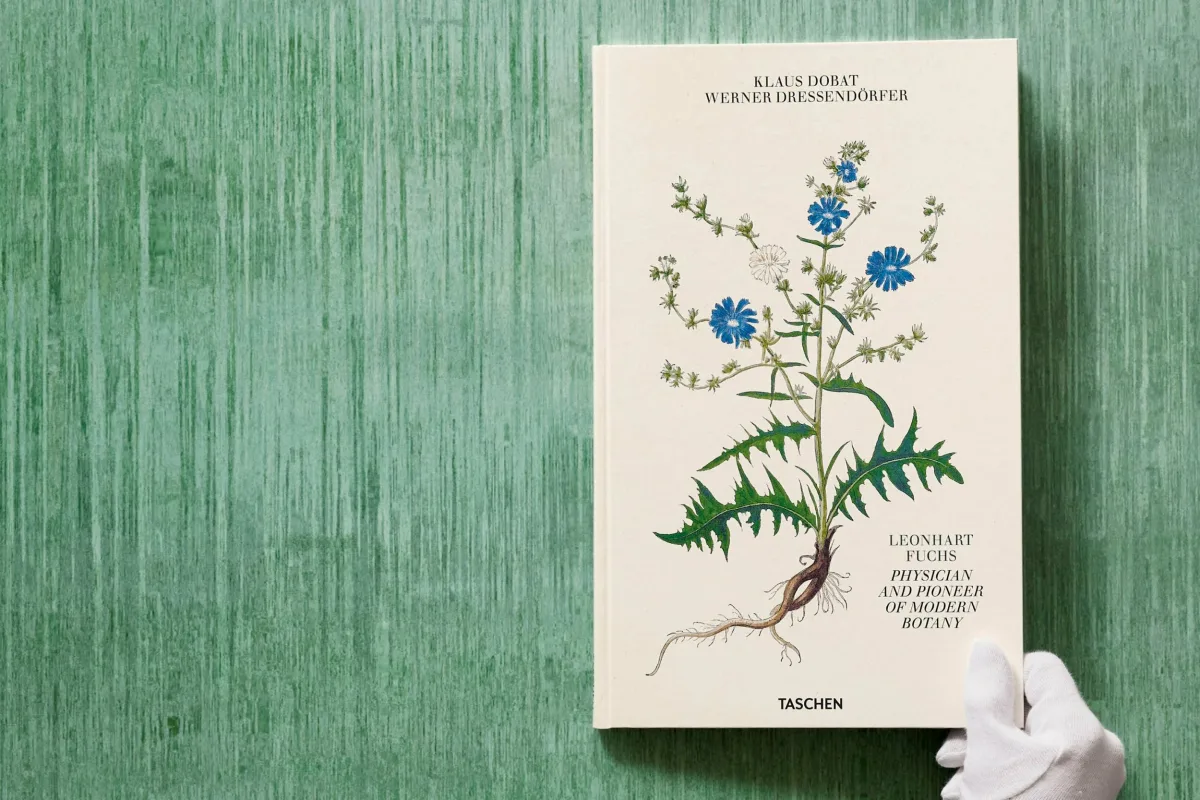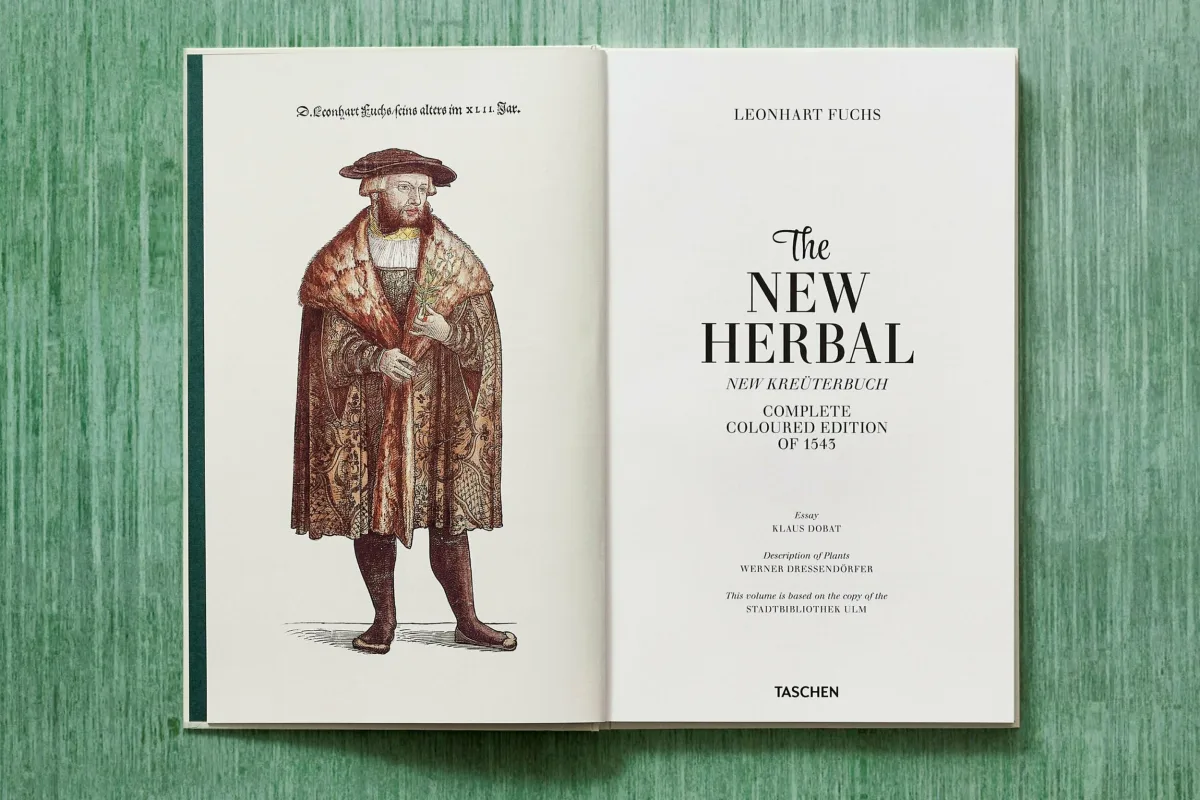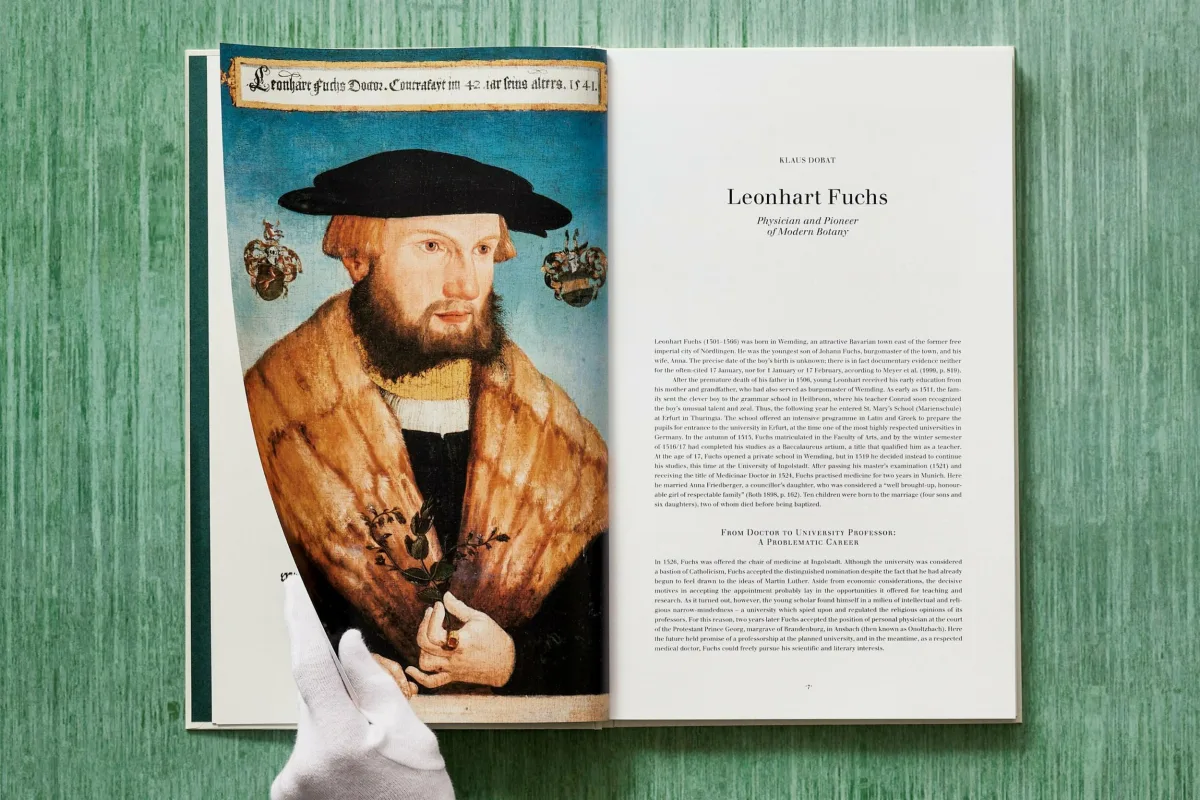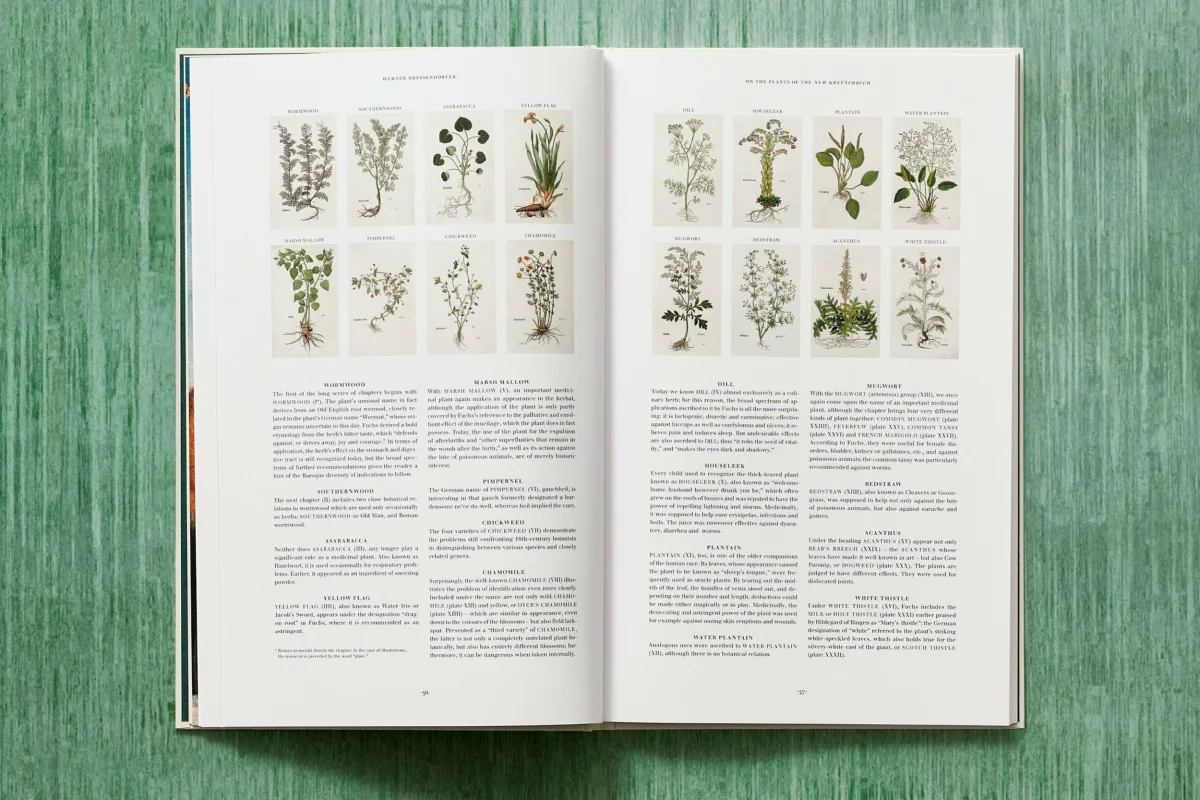1 / 21
XL
I libri XL hanno un'altezza minima di 34 cm, ad eccezione dei titoli in formato orizzontale.
Leonhart Fuchs. The New Herbal
175Edizione: IngleseDisponibilità: DisponibileCon il suo manuale di erbe del 1543, il pioniere della botanica Leonhart Fuchs ha creato un capolavoro della botanica e dell'editoria rinascimentale. Questa edizione è basata sull'originale personale di Fuchs, colorato a mano, e presenta oltre 500 illustrazioni, tra cui la prima documentazione visiva di tipi di piante del Nuovo Mondo come il mais, il cactus e il tabacco.
Hardcover with booklet, 9.1 x 14.6 in., 13.80 lb, 892 pagine
XL
I libri XL hanno un'altezza minima di 34 cm, ad eccezione dei titoli in formato orizzontale.

Leonhart Fuchs. The New Herbal
175Potent Plants
Mother Nature’s medicine cabinet
Leonhart Fuchs (1501–1566,) was a founding father of modern botany, honored to this day in the vivid flower, and corresponding color, Fuchsia. In 1543, Fuchs combined his masterful botanical knowledge with groundbreaking medical research in his New Herbal, a catalog of some 500 types of plants and their healing properties.
While a dependable scientific reference, The New Herbal won fame above all with the detail and quality of its illustrations. Alongside essays describing the plants’ features, origins, and medicinal powers, Fuchs presented each plant with meticulous woodcut illustrations, refining the ability for swift species identification and setting new standards for accuracy and quality in botanical publications. From the age of great exploration, The New Herbal also documented plant types from the recently discovered New World, offering the first visual record of tobacco, maize, kidney bean, and cactus.
This edition is based on Fuchs’s personal, hand-colored copy, which has miraculously survived four-and-a-half centuries in pristine condition. Fascinating for historians of medicine and art, gardeners, and anyone interested in herbal medicine, the volume features over 500 splendid illustrations, and an essay exploring the history of healing herbs.
While a dependable scientific reference, The New Herbal won fame above all with the detail and quality of its illustrations. Alongside essays describing the plants’ features, origins, and medicinal powers, Fuchs presented each plant with meticulous woodcut illustrations, refining the ability for swift species identification and setting new standards for accuracy and quality in botanical publications. From the age of great exploration, The New Herbal also documented plant types from the recently discovered New World, offering the first visual record of tobacco, maize, kidney bean, and cactus.
This edition is based on Fuchs’s personal, hand-colored copy, which has miraculously survived four-and-a-half centuries in pristine condition. Fascinating for historians of medicine and art, gardeners, and anyone interested in herbal medicine, the volume features over 500 splendid illustrations, and an essay exploring the history of healing herbs.
L'autore
Werner Dressendörfer è storico della farmacia e bibliotecario accademico. Ha insegnato all’Università di Erlangen-Norimberga, dove è stato nominato professore onorario. Le sue particolari sfere di interesse riguardano la storia dell’erboristeria nella prima Età moderna, la storia culturale delle piante utili e medicinali, e il simbolismo delle piante nell’arte. Ha pubblicato molti titoli e contributi di storia della farmaceutica e della botanica. È autore dei volumi TASCHEN The Garden at Eichstätt, The Lilies, Leonhart Fuchs: The New Herbal of 1543, Pomona Britannica, The Temple of Flora e The Vegetable Garden.
Leonhart Fuchs. The New Herbal
Hardcover with booklet, 23 x 37 cm, 6.26 kg, 892 pagineISBN 978-3-8365-8766-2
Edizione: IngleseScarica qui le immagini del prodotto
4.3
Wow
21 luglio 2023
Absolute stunning book , so it’s in East German gothic print not English, doesn’t matter a bit . The book is an absolute beautiful masterpiece.A beautifully published book
22 marzo 2023
A beautifully published bookGerman book
4 aprile 2022
This is a stunning book and is beautifully printed. However, beware - this book is German, even if you buy the English version.
